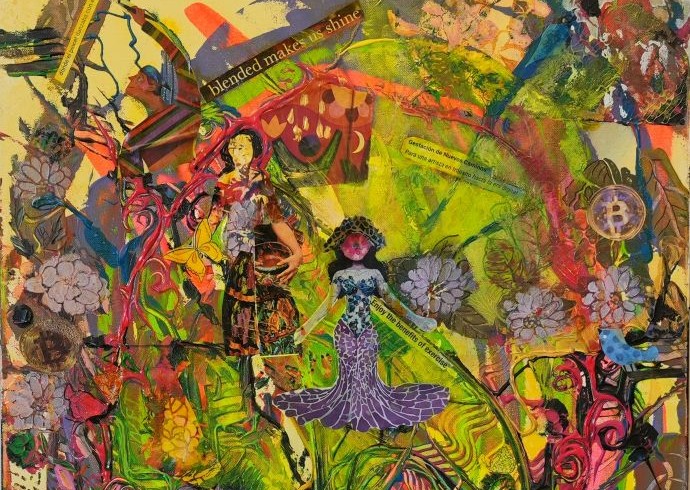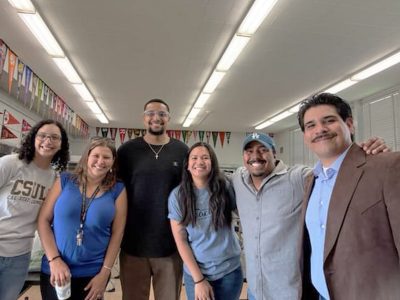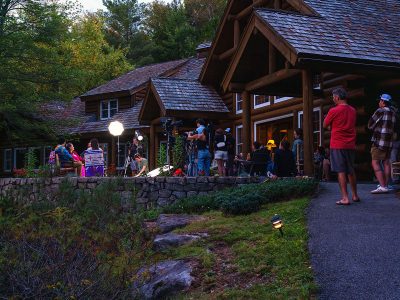La Casita ‘Corpórea’ Exhibition Explores Identity, Healing, Human Form
The themes of healing, identity and community through the lens of the human body are the focus of a new exhibition at La Casita Cultural Center.
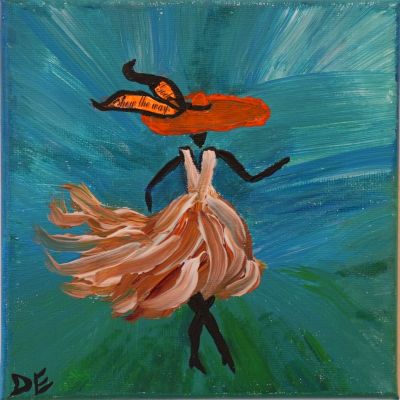
A free public event opens “Corpórea,” which translates to “of the body,” on Friday, Sept. 12, from 6 to 8 p.m. with music, traditional Spanish-Caribbean cuisine and a presentation of participating artists. The exhibition runs through the 2025-26 academic year.
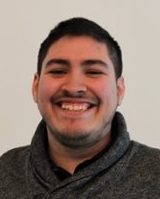
Featuring large-scale collective works and individual pieces created by members of Syracuse’s Latino community, the exhibition recognizes the body as a site of memory, resilience and transformation, says organizer Bennie Guzmán G’25, a Syracuse-based artist and graduate of the master’s program in creative arts therapy in the College of Visual and Performing Arts. Body maps and mixed media, collected over six weeks of art therapy workshops held this summer, reflect the artists’ personal journeys.
“‘Corpórea’ is about what we carry, how we heal and how we thrive,” Guzmán says. “Art becomes a way to regulate, reflect and reconnect. It’s not about being perfect; it’s about being present.”
Emily Nolan, professor of practice in creative arts therapy and a licensed art therapist, was an advisor on the project. M. Emma Ticio Quesada, professor of Spanish and linguistics in the Department of Languages, Literatures and Linguistics, was also involved. Also assisting were Brenda Teruya, a doctoral candidate in the economics program in the Maxwell School of Citizenship and Public Affairs, and Paola Méndez G’25, a graduate of the master’s program in museum studies and curator of the exhibit.
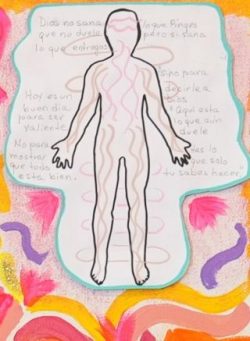
The project is part of the 2025–26 Syracuse Symposium on Creativity, presented by the Syracuse University Humanities Center. It is also supported by the Pan African Community of Central New York and the University’s Latino-Latin American studies program.
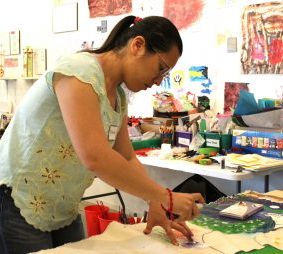
Tere Paniagua, executive director of the Office of Cultural Engagement for the Hispanic Community, says the program was “an opportunity [for participants] to share their stories and experience a sense of wellness through creative expression, even as they navigated linguistic and cultural barriers. The project affirms the importance of visibility, empathy and mutual support and is a powerful model of connection and belonging.”
A series of community dialogues on the outcomes of the program is also planned.
